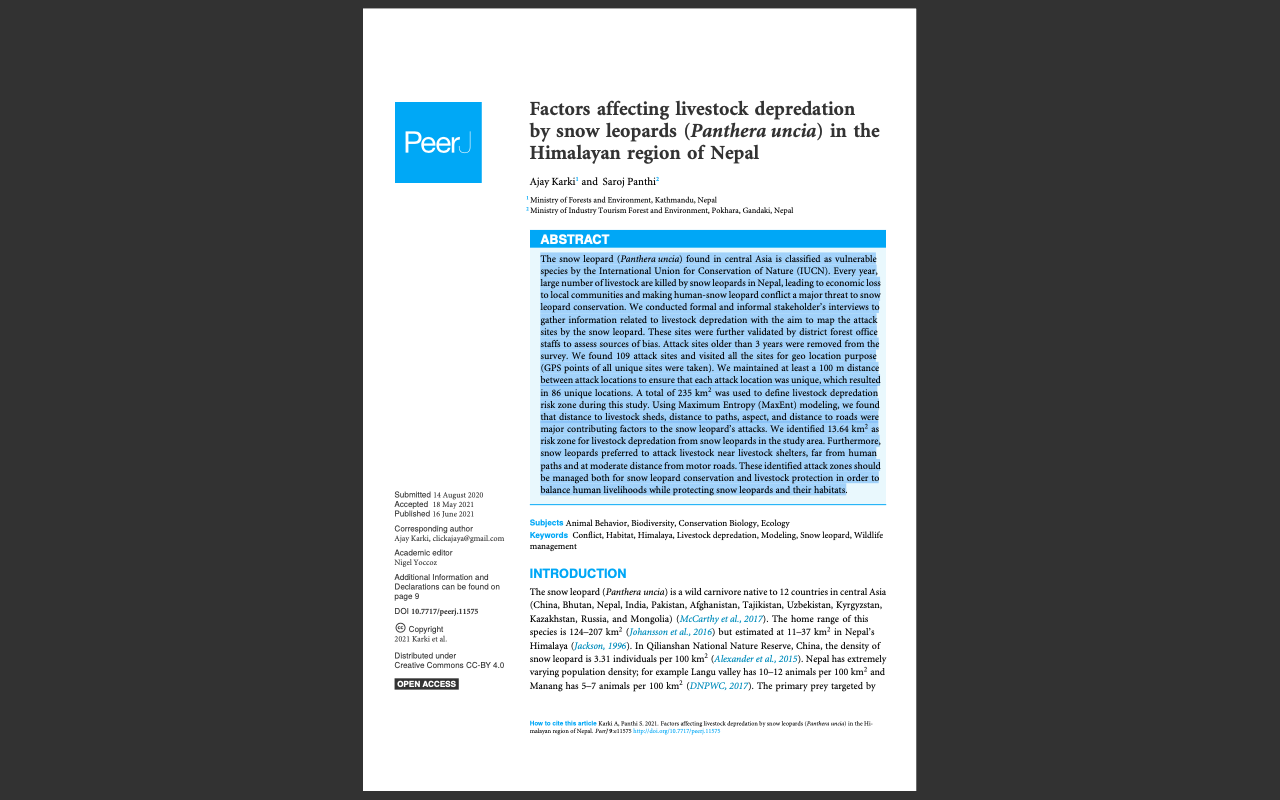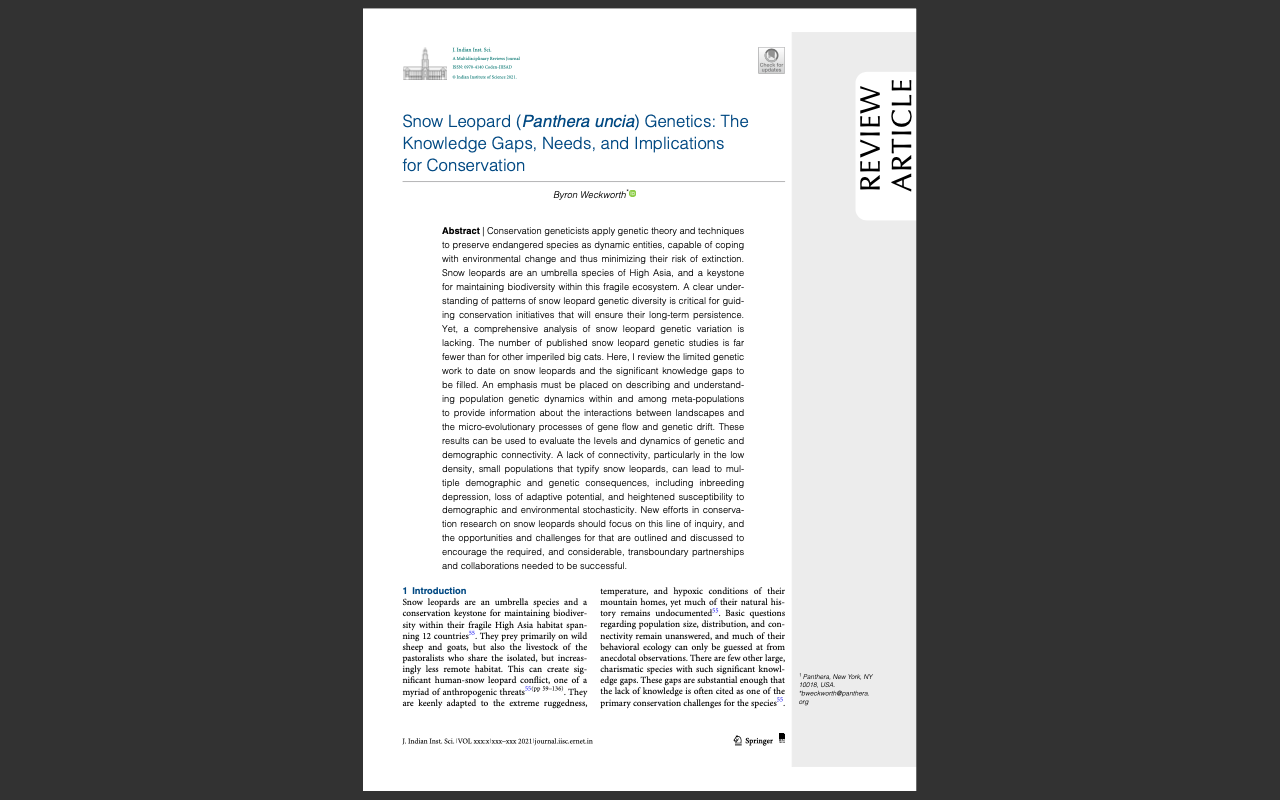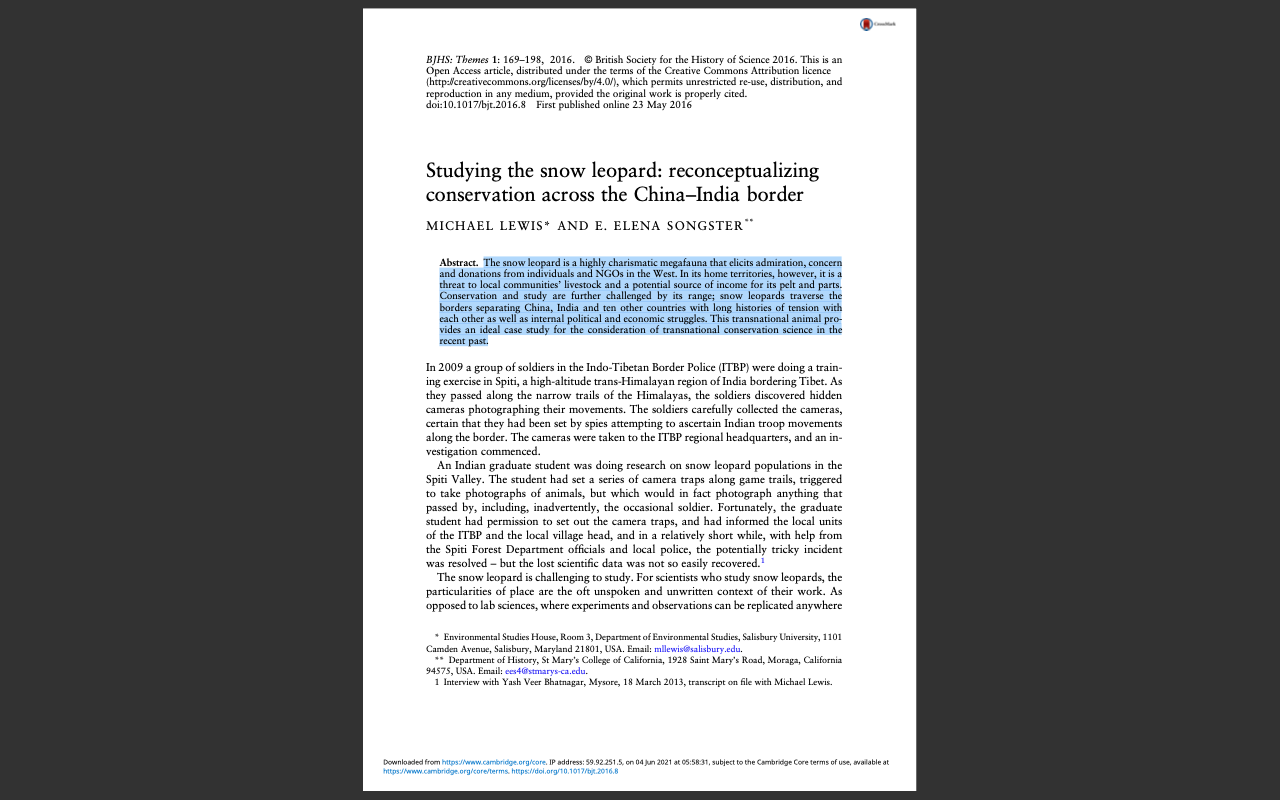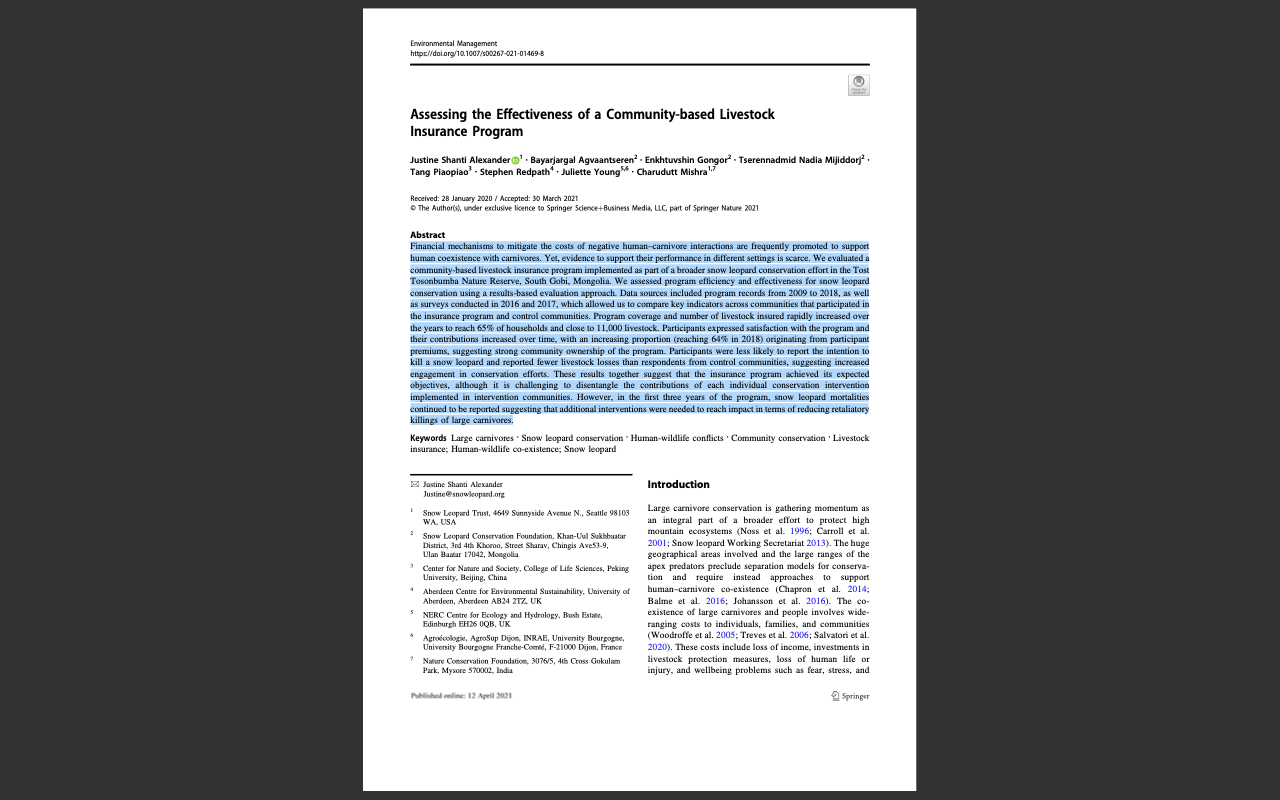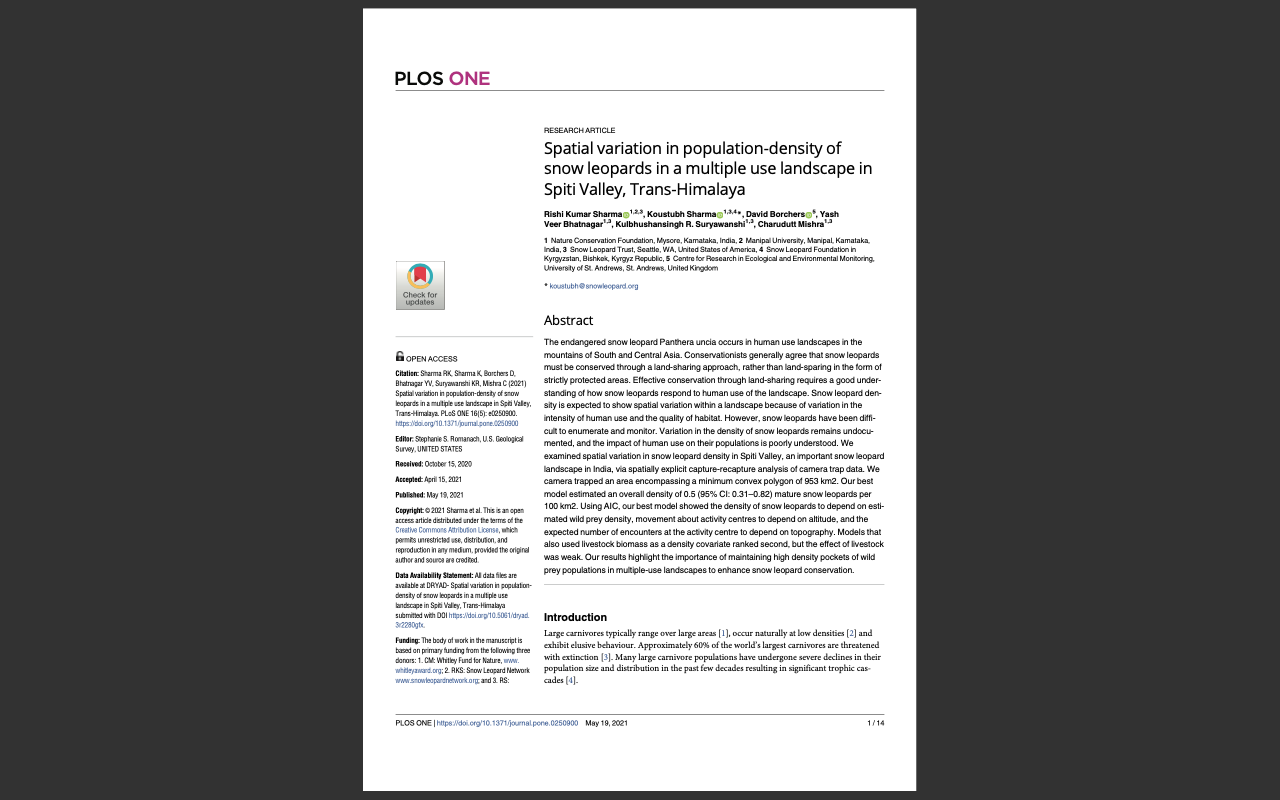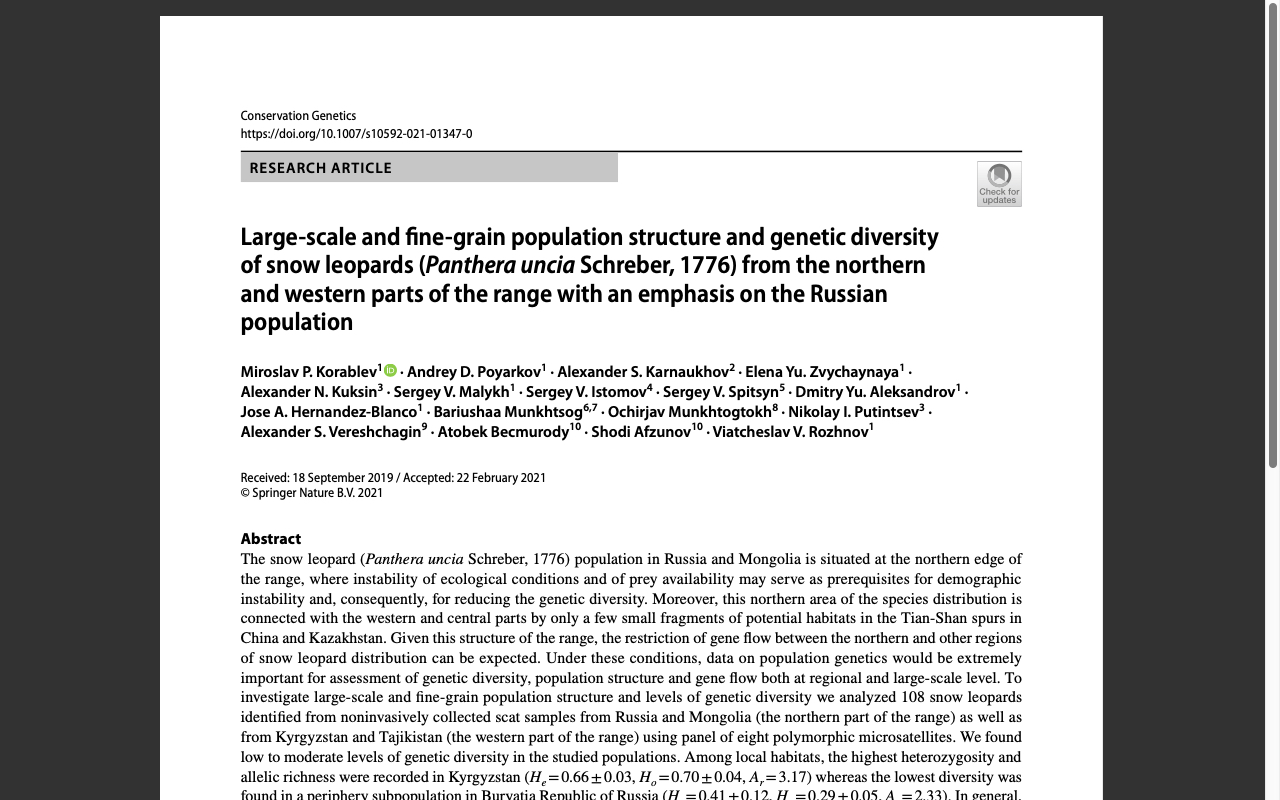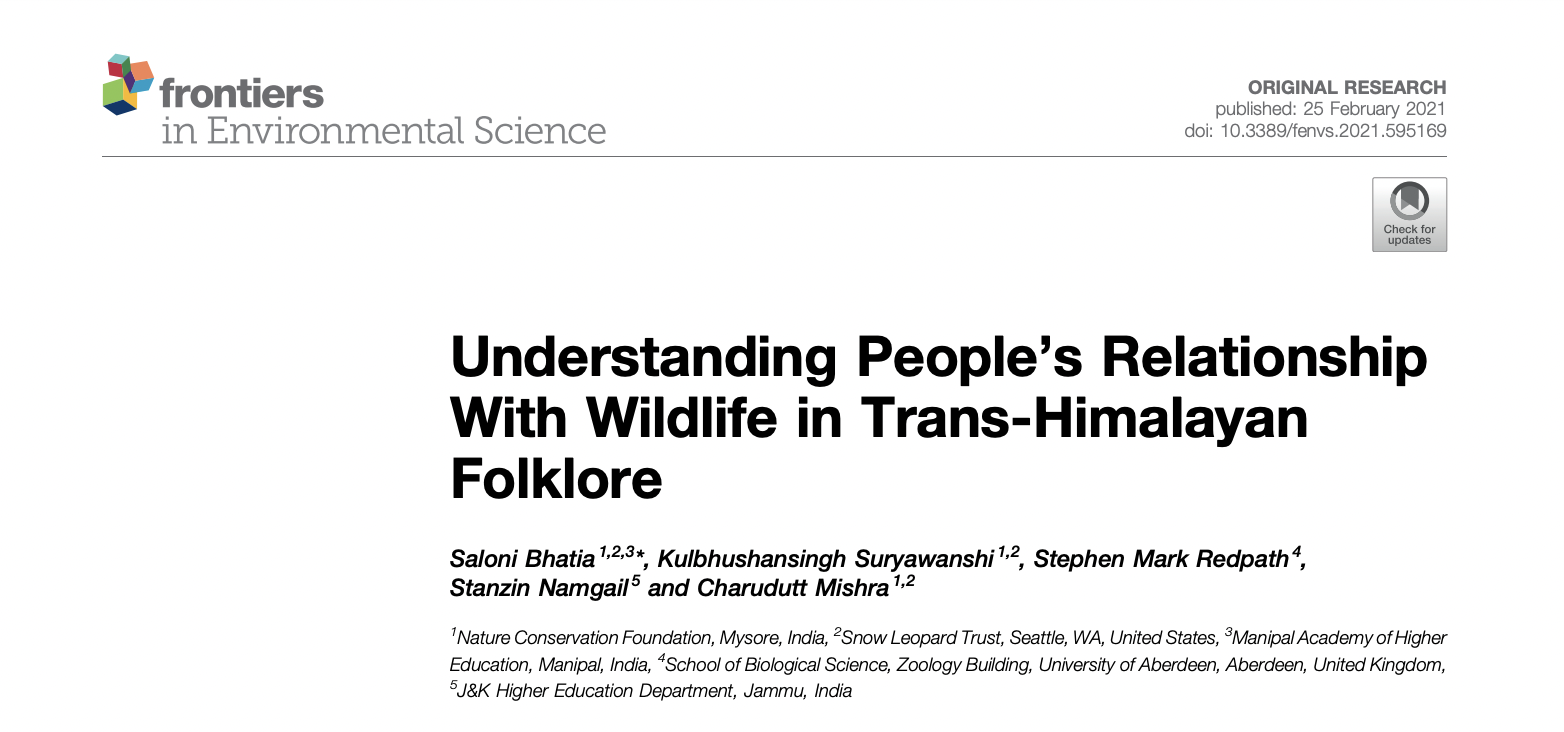
Authors: Nawaz, M. A., Khan, B. U., Mahmood, A., Younas, M., Din, J. U, Sutherland, C.
Abstract: The simultaneous development of technology (e.g. camera traps) and statistical methods, particularly spatially capture–recapture (SCR), has improved monitoring of large mammals in recent years. SCR estimates are known to be sensitive to sampling design, yet existing recommendations about trap spacing and coverage are often not achieved, particularly for sampling wide-ranging and rare species in landscapes that allow for limited accessibility. Consequently, most camera trap studies on large wide-ranging carnivores relies on convenience or judgmental sampling, and often yields compromised results. This study attempts to highlight the importance of carefully considered sampling design for large carnivores that, because of low densities and elusive behavior, are challenging to monitor. As a motivating example, we use two years of snow leopard camera trapping data from the same areas in the high mountains of Pakistan but with vastly different camera configurations, to demonstrate that estimates of density and space use are indeed sensitive to the trapping array. A compact design, one in which cameras were placed much closer together than generally recommended and therefore have lower spatial coverage, resulted in fewer individuals observed, but more recaptures, and estimates of density and space use were inconsistent with expectations for the region. In contrast, a diffuse design, one with larger spacing and spatial coverage and more consistent with general recommendations, detected more individuals, had fewer recaptures, but generated estimates of density and space use that were in line with expectations. Researchers often opt for compact camera configurations while monitoring wide-ranging and rare species, in an attempt to maximize the encounter probabilities. We empirically demonstrate the potential for biases when sampling a small area approximately the size of a single home range—this arises from exposing fewer individuals than deemed sufficient for estimation. The smaller trapping array may also underestimate density by significantly inflating ?. On the other hand, larger trapping array with fewer detectors and poor design induces uncertainties in the estimates. We conclude that existing design recommendations have limited utility on practical grounds for devising feasible sampling designs for large ranging species, and more research on SCR designs is required that allows for integrating biological and habitat traits of large carnivores in sampling framework. We also suggest that caution should be exercised when there is a reliance on convenience sampling.
URL: https://snowleopardnetwork.org/bibliography/Nawaz_et_al_2021.pdf


